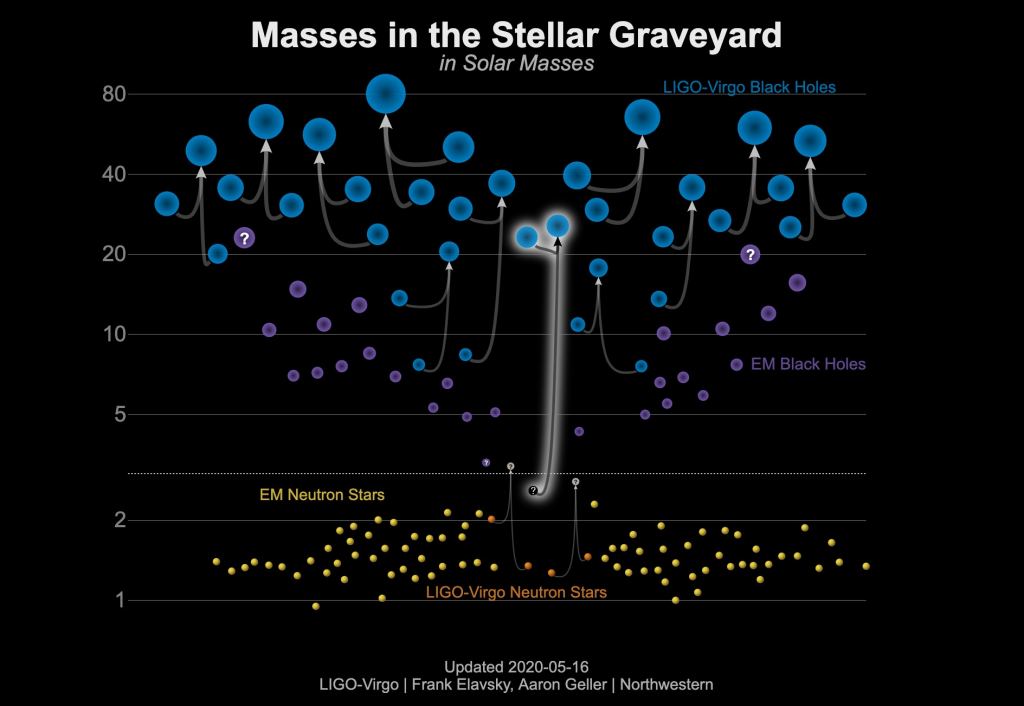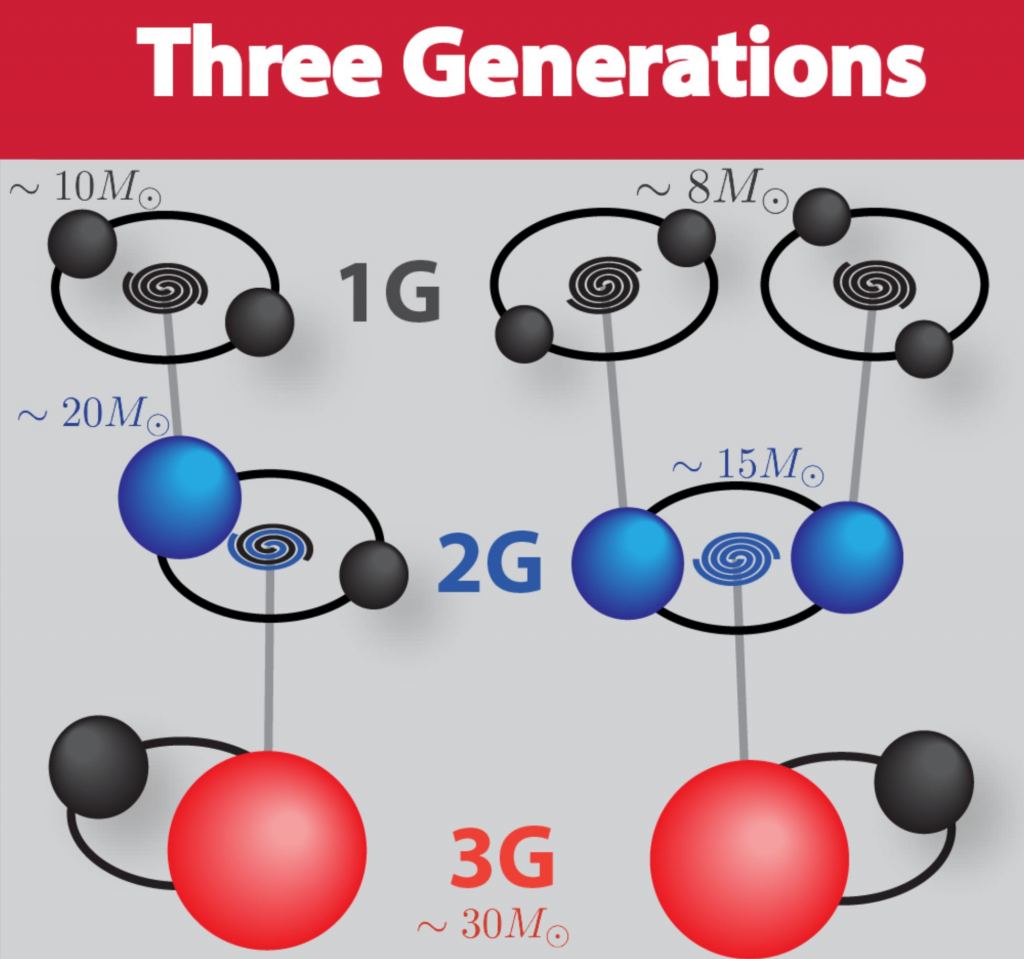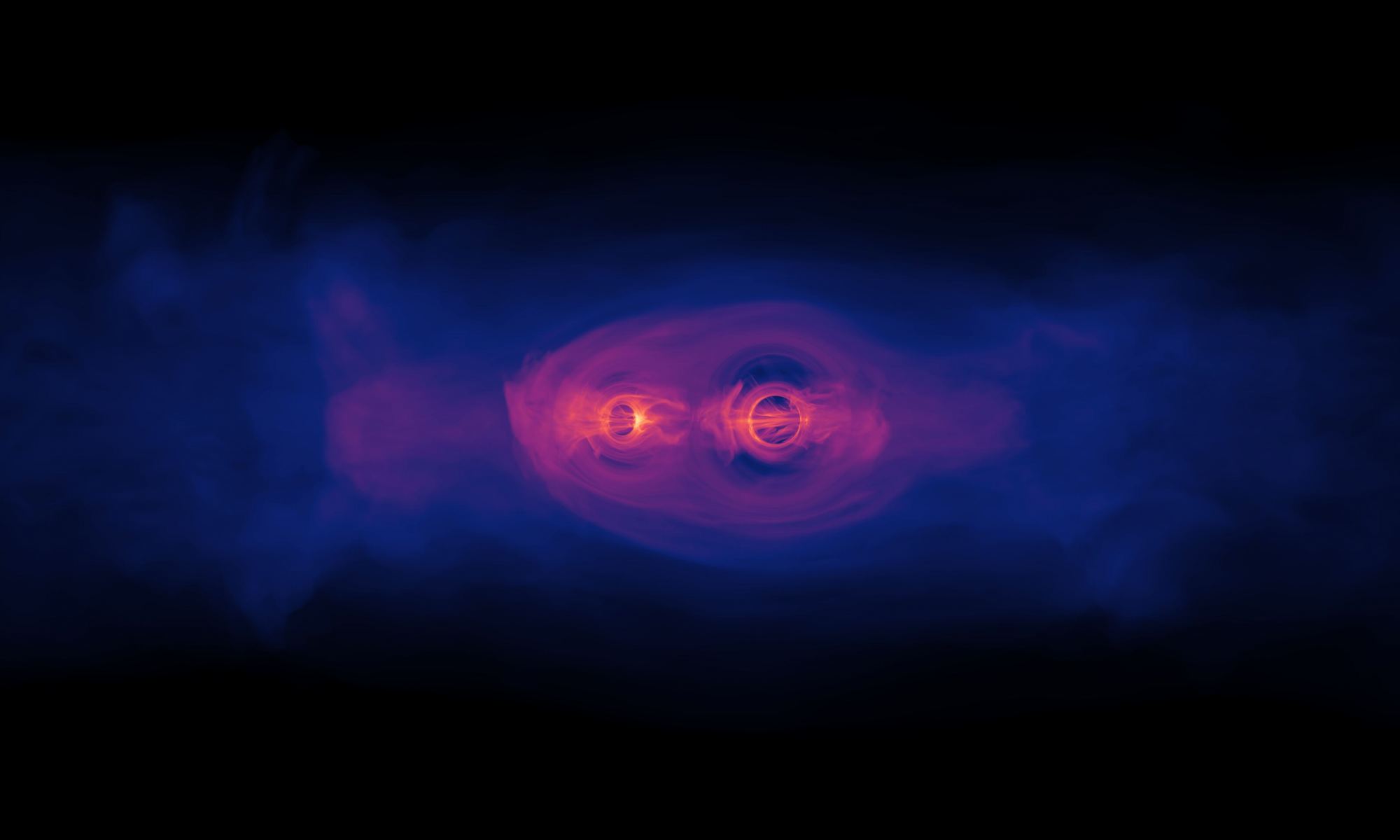On the 12th of April, 2019, the LIGO and Virgo gravitational wave observatories detected the merger of two black holes. Named GW190412, one of the black holes was eight solar masses, while the other was 30 solar masses. On the 14th of August that year, an even more extreme merger was observed, when a 2.5 solar mass object merged with a black hole nearly ten times more massive. These mergers raise fundamental questions about the way black hole mergers happen.

According to current understanding, most black hole mergers should involve black holes of similar mass. They either began as a binary star system, where each star became a black hole or because of the close interaction of two massive black holes. So recently, a team looked at GW190412, hoping to understand how it occurred.
One of the things they noted was the rotation rate of the merged black hole, known as its spin. The spin of a black hole is given as a number from 0 to 1, where 0 represents no rotation at all, and 1 is the fastest rotation a black hole can have. In a simple merger of binary black holes, the two initial black holes have similar rotational directions. So when they merge, the resulting black hole has a relatively high spin, of about 0.7 or 0.8. For GW190412, the resulting spin was much lower, only about 0.43. This suggests the eight solar mass and 30 solar mass black holes were not initially a binary pair.

If GW190412 wasn’t originally a binary system, then it likely formed as a result of multiple mergers. Smaller black holes merged in stages to produce two black holes of very different masses. This is the type of thing that might occur in a dense star cluster. More massive stars tend to move toward the center of a cluster. After becoming stellar-mass black holes, multiple mergers could occur.
So the team ran several computer simulations to see if this was possible for GW190412. They found that multiple generations of mergers can occur within star clusters quite readily. They also found two possible scenarios of multi-stage mergers that could have produced GW190412. If the team is correct, GW190412 is a fourth-generation black hole.
This work also shows how huge black holes might form, particularly in the centers of galaxies. Just as new stars form from the ashes of earlier stars, massive black holes might rise from the remnants of previous mergers.
Reference: Rodriguez, Carl L., et al. “GW190412 as a Third-Generation Black Hole Merger from a Super Star Cluster.” The Astrophysical Journal Letters 896.1 (2020): L10.

